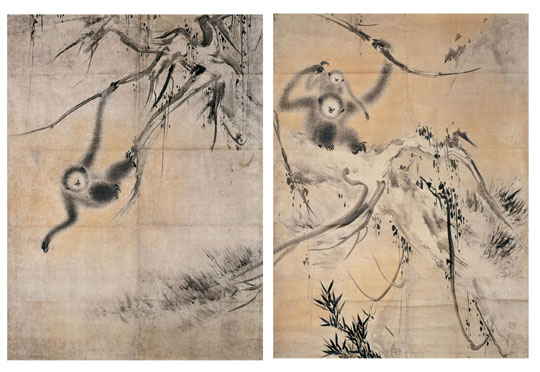"What's in a name? Juliet asks in "Romeo and Juliet." Half a world away, two close contemporaries of Shakespeare, though painters not writers, could have offered some answers: reputation, privilege, commissions and ultimately value.
Hasegawa Tohaku (1539-1610) laid claim to the artistic lineage of the distinguished Muromachi Period (1392-1573) monk-painter Toyo Sesshu (1420-1506), as his fifth generation successor. He traced a line to Sesshu through the master's top student, Toshun, the murky historical figure Mibun and then his adoptive father, Hasegawa Munekiyo, to arrive at himself. The attempt was likely one to bolster his pedigree.
While Hasegawa did this in five generations, Unkoku Togan (1547-1616) did it in three. He signed his works as a descendant of Sesshu, and when the daimyo Mori Terumoto ordered Unkoku in 1593 to make a copy of Sesshu's revered "Long Landscape Scroll" (c. t1486), the result was so well received that he was granted possession of Sesshu's former residence/atelier. An anecdote passed down through the centuries, though prone to embellishment, relates that the dispute between who was the legitimate heir to Sesshu resulted in legal proceedings that decided in Unkoku's favor.


















With your current subscription plan you can comment on stories. However, before writing your first comment, please create a display name in the Profile section of your subscriber account page.